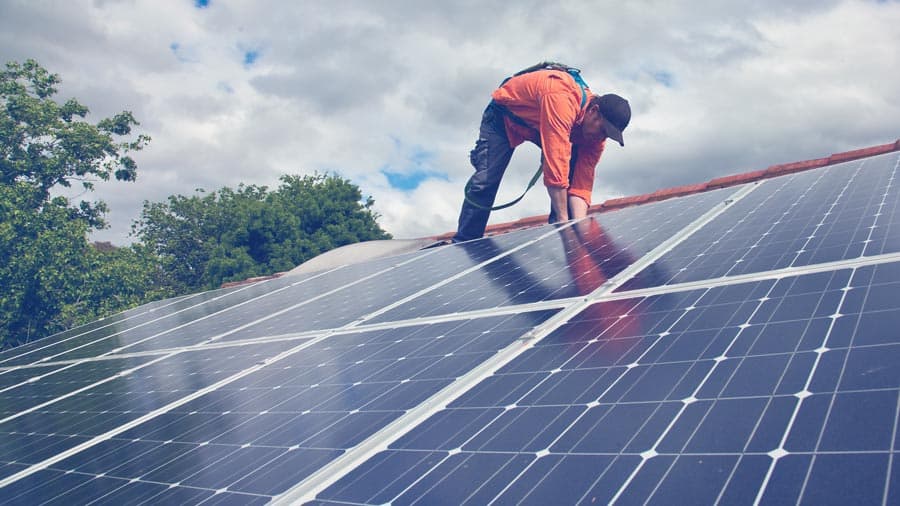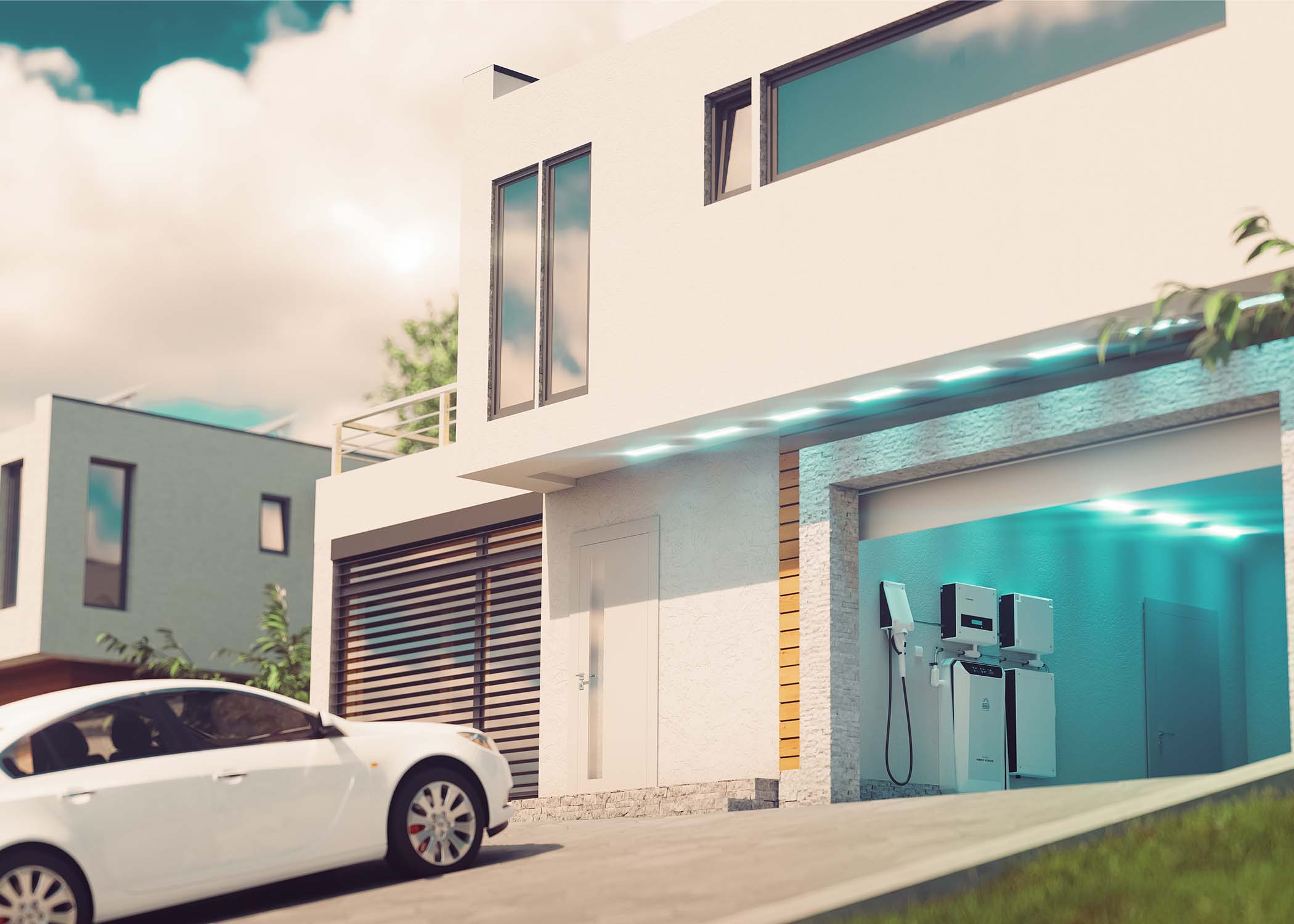Commissioning your off-grid solar system can be an exciting step in your solar installation process. After all, once you’re finished you’ll be producing and using your own power!
Before you commission your system, there are a few things you can do to ensure everything goes off without any problems.
To help, we’ve put together an off-grid solar commissioning checklist as well as some regular system maintenance routines to keep everything running in good shape.
Commissioning Your Off-Grid System
While commissioning your system, be sure to follow the same safety precautions you took during the installation process. This includes using fall protection if you’re on your roof, as well as wearing proper protective equipment (gloves, eye protection, and closed-toe boots).
To properly commission your system, follow these steps:
1. Ensure all wires are properly torqued and/or sealed.
2. If using lithium batteries, disconnect the temperature sensors.
3. Make sure all breakers are turned off.
4. Test the DC voltage of the battery bank to make sure it is within normal voltage limits. A 48V battery bank should read between 48V and 53V at rest.
5. Turn on the solar charge controller output breaker(s).
6. Program the charge controller to match the specifications for charging voltages and times provided by the battery manufacturer. Multiple charge controllers should be programmed identically.
7. Turn on solar combiner box breakers.
8. Turn on input breakers to the charge controller(s). At this point, the charge controller should start tracking the array and charging the batteries.

9. Turn on the main DC disconnect for the inverter. If you have more than one inverter, turn them on at the same time so that they stack properly.
10. Program the AC Input Source (backup generator or grid power). If using a generator, the size will need to be programmed into the inverter.
11. Program inverter AC charge parameters (the solar charge parameters will be different than AC charging parameters). Failure to properly program and charge the battery bank will result in permanent damage to the battery bank, which is not covered by any battery manufacturer’s warranty.
12. Adjust low-battery cut out, which shuts off the inverter below a certain voltage to prevent over-discharging the battery bank. A 48V battery bank should never fall below 48 volts. Lithium batteries may have a higher low battery cut out requirement – check the manufacturer’s manual.
13. Program Automatic Generator Start (AGS) if you want a generator to automatically kick in when your battery bank falls below a certain charge. AGS will also shut itself off and let solar take over when the batteries are charged again.
14. Program battery monitors at the amp-hour capacity of your battery bank to ensure accurate readings from the monitor.
15. Press the power button on the inverter to turn it on.
16. Turn on the AC Output breaker. This will force the Bypass breaker to off, which is where it should be.
17. Each inverter has an AC Input breaker which should stay on most of the time. If there is another input source (like grid power or a generator), this allows it to take over and supply power when necessary.
At this point, your system should be fully commissioned, turned on, and producing power. Remember to check the monitoring system to ensure everything is in working order. Solar panel monitoring is an important part of ensuring your solar system continues to run efficiently.
System Check & Maintenance
Once your system is built and tightened down, the components will naturally settle and relax a bit. We recommend a quick maintenance check after one month to ensure the build is sound, as well as routine system checks every month following.
1-Month System Check
After about a month of operation, check the following for proper commissioning of electrical systems:
Torque Conductor Terminations
Copper is a soft metal that often requires additional torquing after a few weeks to maintain the proper pressure at the connection point. Check each wire on both ends and re-tighten them if necessary.
System Monitoring
If your system includes monitoring, it should be fully functioning after one month. Make sure your system monitoring is reporting normally.
Racking Hardware
Temperature changes can cause racking components to loosen. Make sure that racking hardware is secured and torqued according to specifications.
If you have a roof-mounted array, climb into your attic (if possible) and check for signs of leaks.
For more information on solar racking, check out our free solar racking guide.
Wire Management
First, check your cable management devices to be sure that the conductors can’t move in the wind. You’ll also want to ensure that all conductors are secured off the roof and secure any cables that have come loose.
Battery Bank
Using a multimeter, check that each battery in your battery bank reads the same voltage. Make sure that each battery is the same temperature (you can use an IR thermometer, or simply touch them with a gloved hand). Lastly, check that the batteries regularly reach a full state of charge.
Ongoing Maintenance
To make sure your off-grid system continues to function as best it can, go through the following solar commissioning checklist on a monthly basis:
- Clean any buildup of dust/debris with a soft towel that won’t scratch your panels.
- Look for broken glass, which may indicate a panel has been damaged (from hail, falling debris, etc.).
- Check for corrosion on the racking, panels and other equipment.
- Look for any faulty wiring, but do not touch! Hire an electrician to safely handle any issues.
- Check battery terminals for corrosion and cables for signs of wear.
- Follow our solar battery maintenance guide for regular battery upkeep.
Your Off-Grid Solar System Is Ready To Go
With a properly commissioned solar system and routine solar panel maintenance practices in place, you’ll be in good shape to generate and use your own power, on your own terms, for years to come.
If at any point you find yourself considering an expansion to your off-grid system, we have an off-grid solar system expansion guide with useful information on assessing expansion needs and implementing additional hardware.




